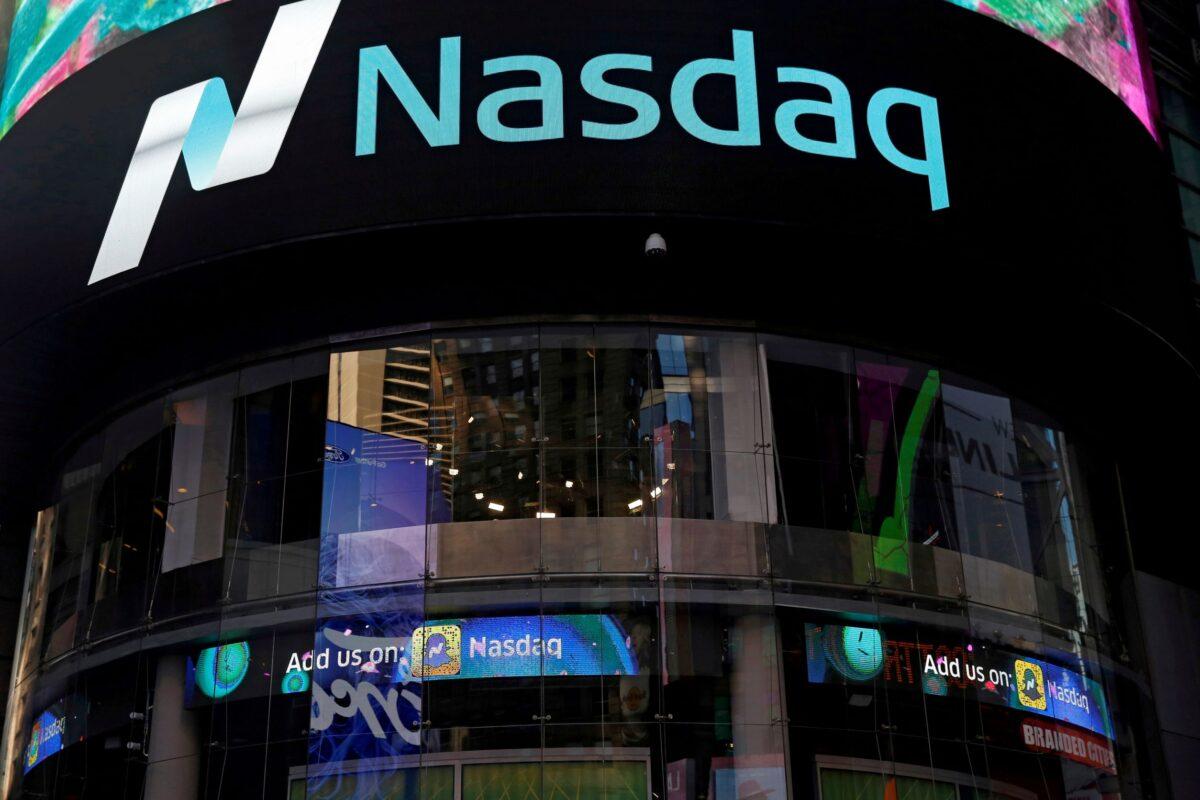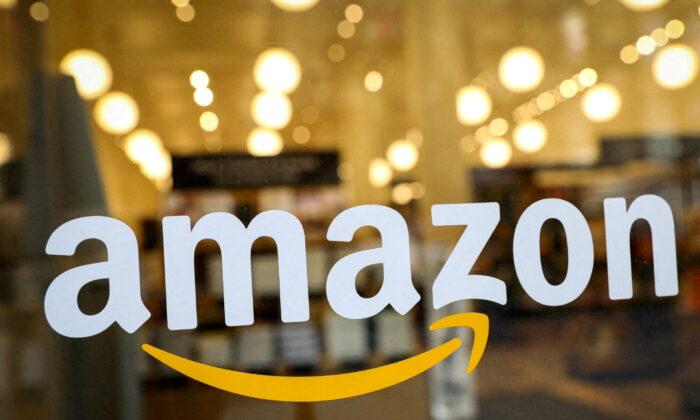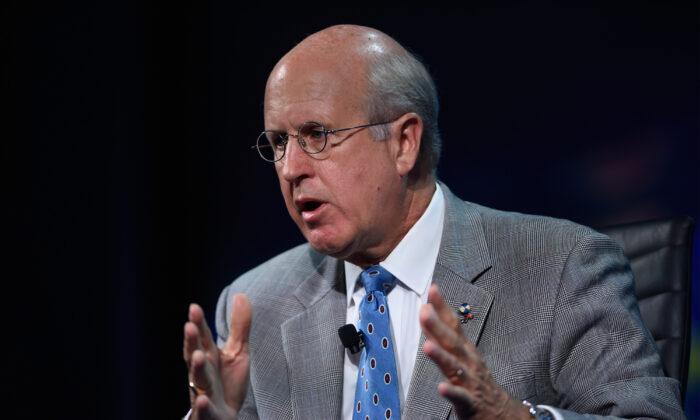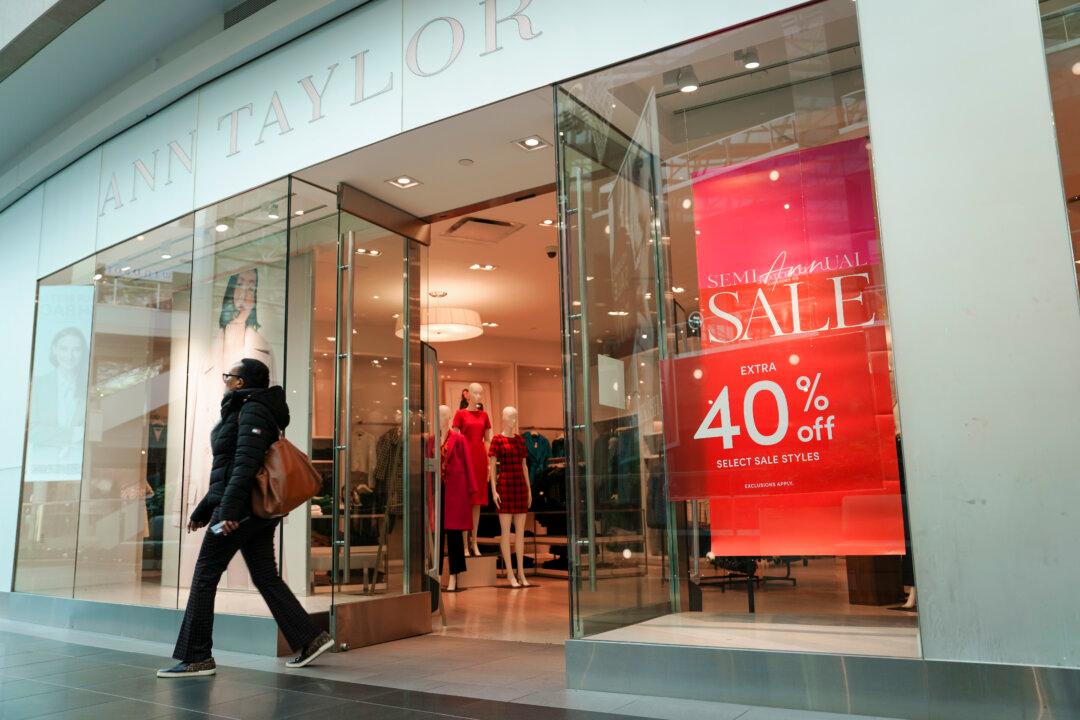Amazon shares have eliminated nearly all of their gains from the COVID-19 pandemic, plummeting about 38 percent thus far in 2022.
For the past two years, Amazon had been one of the top-performing companies amid the global health crisis. As consumers stayed home, shoppers purchased many of their goods—from toilet paper to face masks—from the digital retailer.
At the height of the COVID-induced market meltdown, the online retail giant saw its shares plunge to $1,785. The stock initiated a massive rally in the following months and posted a record-high closing price of $3,731.41 in July 2021. The shares held relatively steady for several more months before trigging a sharp selloff in April, effectively joining the broader tech-heavy slump.
While some might point to the overall slide in tech-related stocks to explain Amazon’s downward trajectory, market analysts point to the Federal Reserve raising interest rates and inflation remaining elevated, trends that have forced investors out of growth stocks and into other safe-haven assets.
“Stocks compete with bonds for investor dollars and as interest rates rise, the yields on bonds also rise. And as bond yields rise, bonds become a more attractive alternative to stocks,” Robert Johnson, a professor at Creighton University’s Heider College of Business, told The Epoch Times.
The tech juggernaut also has endured a plethora of challenges that many other firms currently face: global supply chain snafus, surging labor costs, soaring energy prices, rising inflation, and the military conflict in Eastern Europe.

Moreover, Amazon reported a $7.6 billion loss on its investment in the electric vehicle company Rivian after its value was halved in the first three months of 2022.
Projections for the second quarter are expected to be weaker as well. As a result, revenue growth could be 3 percent to 7 percent lower year-over-year in the April-to-June period, according to the company’s guidance.
The rest of the year may not bode well for Amazon, as profitability issues could persist, according to Dan Romanoff, a senior equity analyst at Morningstar.
At the same time, Amazon could attempt to salvage its losses because “some of the previous adverse factors are not expected to recur,” according to Kunal Sawhney, CEO of the independent equities research firm Kalkine Group.
“But it has some formidable challenges—unionization efforts, tight labor market, hiring and wage issues, and employee discontent—which may slow down growth,” Sawhney told The Epoch Times. “However, it has made considerable progress in some areas, including wage hikes, warehouse modernization for efficiency, and staff comfort.”
However, it could be challenging to pencil in a rebound because the tech juggernaut “is selling at over 40 times forward earnings while the S&P 500 sells at below 18 times forward earnings,” Johnson said.
“To buttress this point, the PEG ratio [price-earnings divided by expected growth] for Amazon is currently 2.55,” he said. “Value investors like to find firms that are selling for low PEG ratios—one is considered attractive. So while Amazon is expected to grow in the future, that growth comes at a very high price for investors.”
Meanwhile, the overall Nasdaq Composite Index has plummeted by 28 percent year-to-date, falling below the key 12,000 level. Last week, the tech-heavy index recorded its first five-week losing streak in a decade, and it suffered its worst month since April 2008.
Financial experts say the Fed winding down its pandemic-era loose monetary policies has been crucial in the index’s decline. Now that the central bank is more hawkish—raising the benchmark fed funds rate and trimming the $9 trillion balance sheet—it’s unlikely to swoop in and save the stock market as it did at the beginning of the coronavirus pandemic and during the Great Recession.
But with many investors pricing in the U.S. central bank’s quantitative tightening initiative, could there be a bottom coming on the horizon? In a rising-rate environment, stocks will continue to face a panoply of pressures in the coming months.
It will be hard to project where Nasdaq is heading because “valuations have been greatly distorted with an ultra-expansive monetary policy and extremely low interest rates over the past 15 years,” according to Ipek Ozkardeskaya, a senior market analyst at Swissquote Bank.
Ultimately, it will come down to inflation and if it reverses in the right direction.
“I believe that the second half of the year should be a period of calm and recovery if, of course, we start seeing the Fed tightening having the desired impact on inflation,” Ozkardeskaya told The Epoch Times. “As soon as the trend in inflation reverses to the right direction, we shall see investors go back to the tech stocks. Price wise, I believe that, in case of a further slump, levels approaching the [10,000] psychological mark should spark interest from dip buyers.”
With the consumer price index (CPI) staying hot at 8.3 percent, there’s a concern that the Fed might consider being more aggressive if 40-year high inflation lingers.
“We don’t rule out 75 forever, right? The cadence we’re going now seems about right to me,” Mester said. “We’re going to have to assess whether inflation is actually moving down, and then we’ll be able to get more information after we do a couple of those to see.”
Following last week’s FOMC meeting, Fed Chair Jerome Powell told reporters that the central bank wouldn’t pull the trigger on rate increases larger than 50 basis points, providing some relief for investors.
Amazon shares extended their losses on May 11, tumbling by about 3.2 percent to about 2,107. The Nasdaq shed about 3 percent, falling under 11,400.





